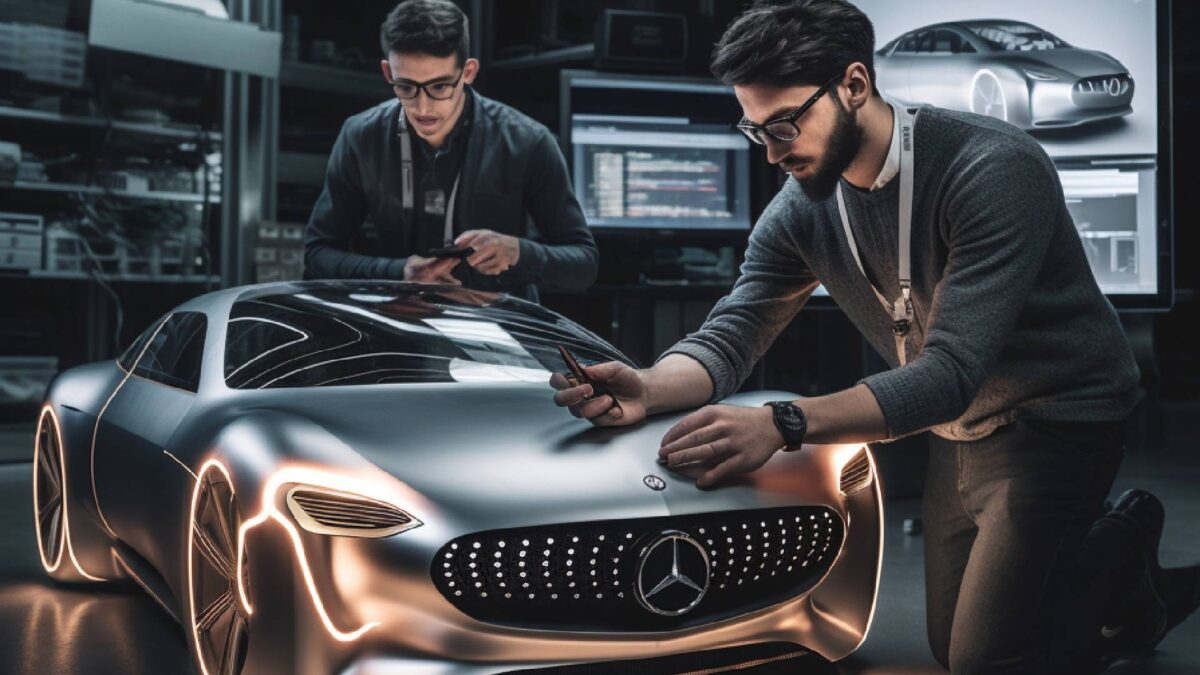How Mercedes-Benz produces and sells cars with AR and VR

From the design floor to the showroom, Mercedes-Benz uses virtual and augmented reality to develop, market, and maintain cars.
For years, Mercedes-Benz has used VR and AR technologies to develop, sell, and optimize its vehicles as well as to train employees. In 2010, for example, the automaker launched its moving driving simulator that eliminated the need for test drives.
The driving simulator is a "capsule on stilts." According to Mercedes-Benz, it contains "a 360-degree screen with a photorealistic representation of the digital environment, a fast electric drive, and a twelve-meter-long track for lateral or longitudinal movements."
Testers place a car in the capsule and connect it to machines. When the gas pedal or brakes are pressed, the view on the screen changes accordingly.
VR and AR in design and production
Mercedes-Benz also uses VR and AR in many other phases of the vehicle design and production process. VR platforms such as Nvidia's Omniverse are used to create and test 3D models of vehicles in virtual environments. Designers and engineers in different locations can collaborate and simulate different scenarios and conditions without expensive prototypes or test drives.
Mercedes-Benz also uses AR technology to visualize the assembly of components and offer remote support for technicians. This enables the company to ensure the quality of its products while saving time and money.
VR and AR in sales and marketing
Mercedes-Benz doesn't only use AR and VR internally. The company also uses immersive technologies to present and market its vehicles. In VR showrooms, potential customers can view and interact with digital twins of the latest vehicle models. They can open the doors, sit inside, and even try out the entertainment system.
The VR showrooms are accessible online and can be visited with various VR headsets. Mercedes-Benz also offers AR-enabled smartphone apps. By scanning a QR code, for example, a user can call up information and videos about specific vehicles or see how a car would look in different colors or in front of their own homes.
Augmented reality and virtual reality are obviously important digital transformation tools for Mercedes-Benz. The company shows how the technologies can be used to develop, sell, service, and improve products. Both employees and customers benefit from realistic and interactive experiences.
The automotive industry has long relied on virtual reality
Other car manufacturers have also discovered virtual and augmented reality. For example, Honda also uses VR in the vehicle design process to make model design and maintenance cheaper. VR headsets help designers avoid air travel and work on prototypes remotely through VR collaboration.
Manufacturers also want to bring AR and VR technologies into the vehicles. Audi's Activesphere concept car shows what this can look like.
Note: Links to online stores in articles can be so-called affiliate links. If you buy through this link, MIXED receives a commission from the provider. For you the price does not change.